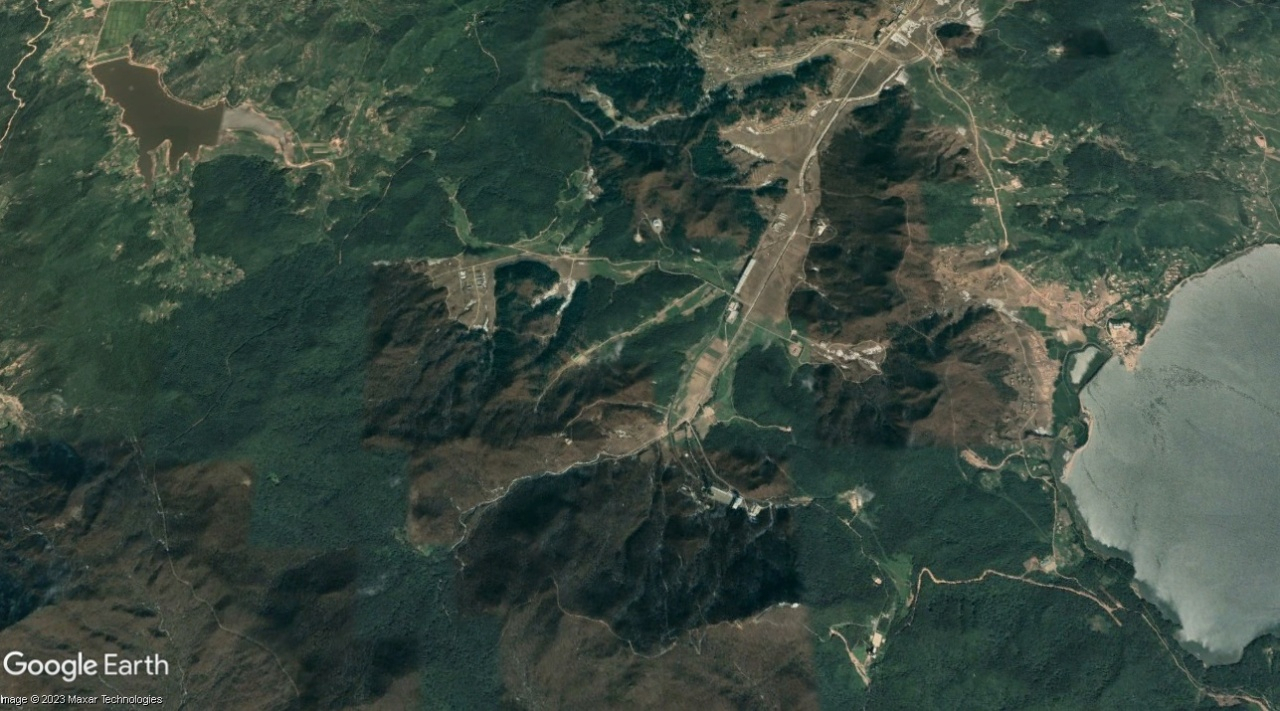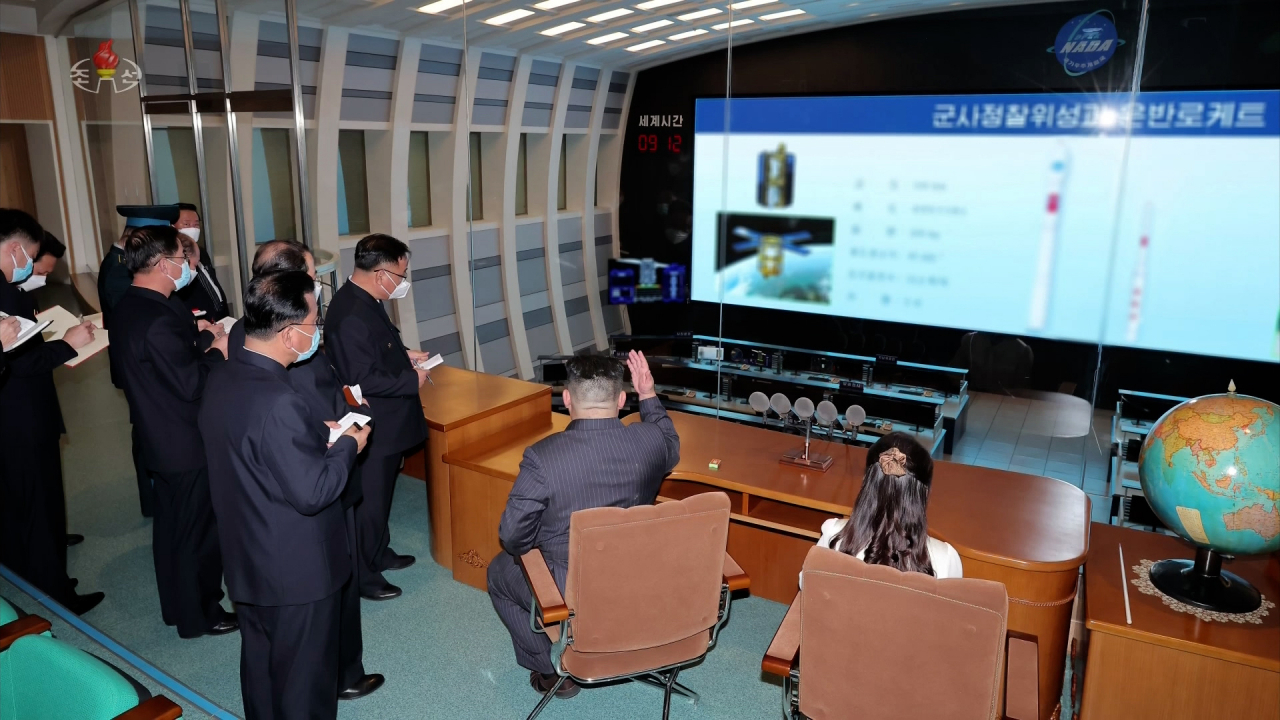 |
Sohae Satellite Launching Station (Google Earth) |
North Korea has resumed refurbishing a launchpad at the country’s main long-range missile and rocket launching station on the west coast since late last month, after nearly a half-year hiatus, a US think tank said Sunday.
The construction activities have taken place to renovate the Sohae Satellite Launching Station in the Tongchang-ri area, North Pyongan Province, according to 38 North who based its findings from analyzing recent satellite imagery. The launch site has been used to launch the Kwangmyongsong-4 satellite and other long-range rockets as well as conduct key tests to develop intercontinental ballistic missiles, or ICBMs, including engine ignition tests.
“Work on the launch pad restarted within the past two weeks and is proceeding rapidly,” 38 North said.
Earlier satellite imagery from the January to April period indicated minimal activity, but “this spurt of activity since April 30, after months of not much happening, is remarkable,” it added.
A new crane tower, which stands approximately 90 meters tall, has been constructed adjacent to the existing gantry tower, designed to provide working access to rockets standing on the launchpad.
The construction of the new crane tower suggests that the height of the gantry tower, which stands at 65 meters, could potentially be extended by an additional 20 meters.
The higher the gantry tower, the larger rockets it can accommodate.
The recent satellite imagery also showed reassembly work taking place at the rail-mounted transfer structure, which is around 32 meters tall. The current height would be able to accommodate an Unha-3 satellite launch vehicle or a similar SLV with a comparable height. The Unha-3 is a three stage, liquid-fueled SLV with an overall length of around 30 meters.
38 North said it was unclear why the structure was disassembled and rebuilt to the same height. But one potential explanation is that the reassembly work could aim to reinforce its structure and equipment so that “it can handle heavier and bulkier launch vehicle stages.”
The construction activities have been carried out in accordance with specific orders given by North Korean leader Kim Jong-un during his visit to the Sohae Satellite Launching Station in March 2022. Kim called for upgrades and expansions to the facility to enable it to launch various types of satellites, including military reconnaissance satellites.
 |
North Korean leader Kim Jong-un (center), along with his daughter Ju-ae (right), visits the National Aerospace Development Administration in Pyongyang on April 18, 2023, in this photo provided by the North's official Korean Central News Agency. (Yonhap) |
Kim claimed that North Korea had “completed manufacturing the military reconnaissance satellite No. 1 as of April” during his recent visit to the state-run National Aerospace Development Administration on April 18.
Kim also ordered the launch of the country’s first military spy satellite to go ahead as planned, without providing a specific date for it.
But 38 North on Sunday explained it would still be a long way to go before a satellite can be launched at the Sohae Satellite Launching Station.
“However, there remains much to be done both to the launch pad itself and to rebuild the fuel and oxidizer bunkers before a satellite launch can be undertaken from this location.”
The resumption of the construction work came as North Korea has remained quiet for a month. The country has not conducted any missile launches since the first test-firing of a new-type solid-fuel intercontinental ballistic missile on April 13.
North Korea also did not take any military action to respond to the summit between South Korean President Yoon Suk Yeol and US President Joe Biden, nor for the summit between Yoon and Japanese Prime Minister Fumio Kishida in April and May, against analysts’ expectations.
The North Korean leader has not made any public appearances either since April 18. But analysts are keeping an eye on whether North Korea will take action in the run-up to a trilateral summit among Yoon, Biden and Kishida to be held later in the week on the sidelines of the G-7 Hiroshima summit.
The US Air Force flew its RC-135S Cobra Ball intelligence-gathering aircraft over the West Sea by the Korean Peninsula from Kadena Air Base on the Japanese island of Okinawa for two consecutive days on Sunday and Monday, according to real-time aviation trackers. The US Air Force operates three Cobra Ball spy aircraft that are equipped with specialized multiple sensors designed to detect ballistic targets.
South Korea’s Joint Chiefs of Staff said Monday that the South Korean and the US intelligence authorities are keeping close tabs on North Korean activities in close coordination.







![[Today’s K-pop] Blackpink’s Jennie, Lisa invited to Coachella as solo acts](http://res.heraldm.com/phpwas/restmb_idxmake.php?idx=644&simg=/content/image/2024/11/21/20241121050099_0.jpg)